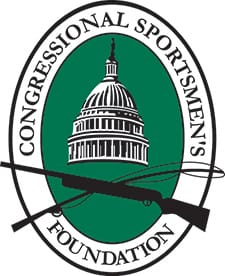

Washington, D.C. -(Ammoland.com)- On Tuesday, November 8, Montanans will decide the future of trapping in the state when they go to the polls to vote on Initiative 177 (I-177), which would ban trapping on public lands in Montana, subverting the science-based fish and wildlife management model in the United States.
As written, I-177, “generally prohibits the use of traps and snares for animals on any public lands within Montana,” with very narrow exemptions given to state and federal wildlife managers in certain circumstances.
Passage of I-177 would effectively decimate legally-allowed fur trapping in Montana and create significant hurdles for both municipalities and state fish and wildlife managers needing to utilize trapping to mitigate animal damage and/or excessive predation in certain instances.
Trapping has long been a key tool used by wildlife managers to help regulate certain populations and address damage to livestock, farmlands, and municipal property.
Numerous in-state and national sportsmen’s groups have expressed opposition to I-177, as have in-state farming and ranching interests.
Unfortunately, anti-hunting and anti-trapping groups have relied on non-scientific rhetoric and emotionally-charged messages as a means of ending trapping in the state, despite a lack of demonstrable evidence that legal, regulated trapping, via both fur trappers and animal damage control workers, has had any negative impacts on wildlife populations.
Measures like I-177 pose a critical threat to fish and wildlife management in Montana and across the country. The U.S. has long adhered to the North American Model of Wildlife Conservation, the most successful wildlife management system in history.
The North American Model relies upon trained professionals in areas such as biology, ecology, and law enforcement, to utilize the best-available science in the management of fish and wildlife species.
Adherence to this Model has led to the restoration of numerous fish and wildlife species across the country, including wild turkeys, white-tailed deer, and the American alligator, to name but a few.
The Montana Department of Fish, Wildlife and Parks (FWP), which is tasked with managing the state’s fish and wildlife resources, already strictly regulates trapping by instituting trapping seasons on various species and requiring trappers to set traps at particular distances away from highly-used public roads and trails.
Using the ballot box as a means to guide wildlife management constitutes a radical departure from the science-based North American Model, as it takes management decisions out of the hands of those (the Montana Fish and Wildlife Commission) most qualified to develop trapping and other wildlife-related regulations.
It diminishes the work of the Montana Fish and Wildlife Commission, which is comprised of professionals trained to manage Montana’s wildlife via the best available science.
Further, Montanans demonstrated their support for the right to legally harvest wild fish and game with the passage of a 2004 ballot measure that added this right as an amendment to the state’s Constitution.
Montana’s 335,000 sportsmen and women are an enormous economic driver in the state, supporting more than 16,500 Montana jobs and spending $983 million in the state each year, while generating $102 million in state and local tax revenues.
Eliminating the ability to trap and harvest wildlife on public lands, as well as taking away a valuable wildlife management tool, will negatively impact the economic impact of sportsmen and women in Montana, as well as negatively impact the revenue that flows to the state for fish and wildlife management through license and tag sales and excise taxes collected on the sale of hunting and fishing equipment.
About Congressional Sportsmen’s Foundation (CSF):
Since 1989 CSF has maintained a singleness of purpose that has guided the organization to become the most respected and trusted sportsmen’s organization in the political arena. CSF’s mission is to work with Congress, governors, and state legislatures to protect and advance hunting, angling, recreational shooting and trapping. The unique and collective force of the Congressional Sportsmen’s Caucus (CSC), the Governors Sportsmen’s Caucus (GSC) and the National Assembly of Sportsmen’s Caucuses (NASC), working closely with CSF, and with the support of major hunting, angling, recreational shooting and trapping organizations, serves as an unprecedented network of pro-sportsmen elected officials that advance the interests of America’s hunters and anglers.
For more information, visit: www.sportsmenslink.org.
